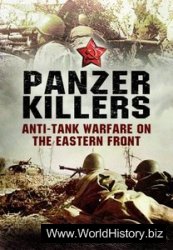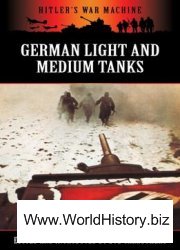Were simuUaneously committed to internal security operations in Algeria and Cyprus. Port Said was selected as the target after Alexandria had been initially considered. Anglo-French forces earmarked for the operation, code-named “Musketeer”, originally comprised
79,000 men, 21,000 vehicles, 500 aircraft and 130 warships, a force comparable to that landed at Anzio in 1944.
Whilst the allies prepared for war amidst rising domestic political discord, the Israelis attacked the Egyptians in the Sinai, launching their assault on October 29 as the Anglo-French forces embarked in Malta, Algiers and Cyprus, to be joined at sea by those dispatched from British and French ports. The US Sixth Fleet shadowed and at times hindered the Allied force as it headed towards the Eastern Mediterranean. Following warnings to the Egyptian civilian population, Anglo-French air attacks were launched against military targets from November 1, and within 48 hours the Egyptian Air Force had been driven off to friendly Arab states or destroyed on the ground. The air attacks, now augmented by carrier-borne aircraft, continued on November 3-4. At first light on November 5, British and French paratroops dropped on El Gamil airfield and Port Fouad. Early on November 6, the Allied fleet arrived off Port Said, and following a short bombardment launched the world’s first helicopter-borne amphibious assault whilst landing craft went ashore with Commandos to take the town from the sea. As night fell, a cease-fire was negotiated, but not before elements of the British 16th Independent Parachute Brigade Group had rushed down the Canal towards Suez as far as El Kap, about 15 miles (24km) out of Port Said, where they dug in. The sea tail of the force began to arrive from England on November 10 in the form of part of 3rd Infantry Division, whose troops took over from the Commandos and Paras.
To a background of Security Council pressure at the United Nations and veiled threats of nuclear war from the USSR, the allies began to withdraw from Port Said on December 7 as the first units of a UN peacekeeping force arrived.
By December 22 the un takeover was complete, the only remaining Anglo-French units being specialists who stayed behind for two months under un auspices to help clear dozens of sunken blockships from the Canal. In the Sinai, a un force replaced the Israelis, who withdrew back to their start lines in the north.
As the result of the operation, claimed as a triumph by the Egyptians, Anglo-French influence in the Middle East reached a nadir and that of the Soviet Union was now in the ascendant. It did not prove a great diplomatic success for the US, whose government under President Eisenhower and Secretary Dulles vainly sought to fill the vacuum left by the discomfiture of France and Britain. Anglo-American relations were for a time seriously eroded and the growing instability which has characterized the Middle East since 1956 began to be apparent. Eden’s failing health, which throughout had seriously affected his political judgment, led to his resignation early in 1957. British casualties in “Musketeer” were negligible - 22 killed and fewer than 100 wounded. The French lost 10 men killed and 33 wounded. Ten allied aircraft were lost. Egyptian casualties in Port Said and Port Fouad amounted to about 750 killed and 2,400 wounded. MH.
Suffren (French battleship) see
DARDANELLES (lOls).
Sugiyama, Field Marshal Hajime
(1880-1945). Jap. A leading advocate of war with the West and a “Strike South” policy, Sugiyama was Minister of War and chief director of the China campaign, 1937-38. CGS, 1940-44; Minister of War, succeeding Tojo, July
1944-April 1945. Then appointed Commander, First General Army, for “defence to the death” of Japan. Following the surrender, Sugiyama was influential in persuading the home forces to disarm peacefully, before committing suicide on September 12 1945.
Sukarno, Achmed (1897—1970). Indonesian. President of Indonesia (1949-67), when he was removed from power by Gen Suharto (b. l921). See malaysia-indonesia
CONFRONTATION (l963 —6«).
Sukhoi Su-7 “F'itter-A” (USSR). Single-seat strike fighter. Entered Russian service 1959; supplied to some 15 other air services. Used in combat in the India-Pakistan War 1971 and also in the Arab-Israeli War of October 1973. One 15,1341b (6,865kg) s. t. Lyulka AL-7F-1 engine; max. speed l,056mph (l,699kph); two 30mm cannon, bombs and/or rockets.
Summerall, Gen Charles Pelot
(1867—1955). US. A hero of the Boxer Rising, standing under fire while directing his gunners in the breaching of the Chi Hua Gate, Peking, August 1900. Summerall ended World War I in command of US V Corps at Meuse-Argonne Forest, 1918. At this time he began his development of fire direction centres for the central control of several batteries and for speedy and effective communication between advancing infantry and supporting artillery, providing the basis of US field artillery doctrine thereafter; also noteworthy was his successful advocacy of the 105mm howitzer as standard US divisional artillery. Summerall was US Army Chief of Staff, 1926-?>Q. RO'N.
Sunda Straits, Battle of the see
JAVA SEA, BATTLE OF THE.
Sunderland, Short S25 (Br, WWII and later). Reconnaissance/anti-submarine flying-boat; crew 10. Prototype flew October 16 1937; first production April 21 1938. Three squadrons operational by outbreak of war; remained in service until May 1958. Korean War; used Berlin airlift 1948. Development up to Mark V increased effectiveness. Postwar 19 to French Aeronavale, 16 to rnzaf. Production, 749. Four l,010hp Bristol Pegasus XXII or l,200hp Pratt and Whitney R-1830-90B/C/ D engines; max. speed 213mph (343kph); up to ten 0.303in and two 0.5in machine guns, 4,9601b (2,250kg) bombs, mines and/or depth charges.
Superfortress see b-29 superfortress.
Supreme Headquarters Allied Expeditionary Force (SHAEF).
The designation of Eisenhower’s command of the Anglo-American





 World History
World History









